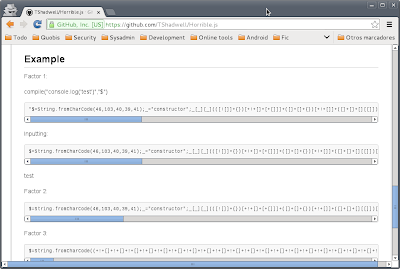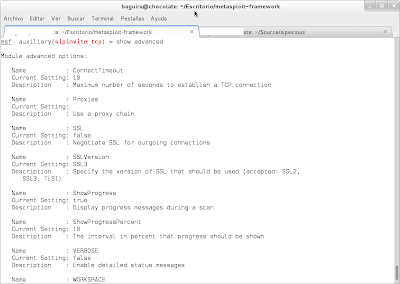Hi again guys, here there is my new personal project. I think that README file is complete enough so I paste it on this post.
Next month I'll be with my colleague Antón at Kamalio World Conference showing a bit more about it. If you are there and want to talk a bit about VoIP security (or WebRTC) get in contact with us please. :)
Finally, we would like to publish the first version in one ore two months, sorry but we're developing it mostly in our free time :(. I've promised Yago to do it onSecurity by Default blog so stay tuned.
Moreover this tool was included in Quobis personal project plan so you can always follow Quobis planet in which we publish all our experiments.
Nothing else, I hope you like it and all kind of suggestions (and coders) are welcomed :).
Bluebox-ng
Bluebox-ng is a next generation UC/VoIP security tool. It has been written in CoffeeScript using Node.js powers. This project is "our 2 cents" to help to improve information security practices in VoIP/UC environments.- GitHub repo: https://github.com/jesusprubio/bluebox-ng
- Demo: http://www.youtube.com/watch?v=02AuYf66sx0
Install deps
- cd bluebox-ng
- npm install
Run
- npm start
Features
- Automatic pentesting process (VoIP, web and service vulns)
- SIP (RFC 3261) and extensions compliant
- TLS and IPv6 support
- VoIP DNS SRV register support
- SIP over websockets (and WSS) support (draft-ietf-sipcore-sip-websocket-08)
- REGISTER, OPTIONS, INVITE, MESSAGE, SUBSCRIBE, PUBLISH, OK, ACK, CANCEL, BYE, Ringing and Busy Here requests support
- Extension and password brute-force through different methods (REGISTER, INVITE, SUBSCRIBE, PUBLISH, etc.)
- DNS SRV registers discovery
- SHODAN and Google Dorks
- SIP common vulns modules: scan, extension brute-force, Asterisk extension brute-force (CVE-2011-4597), invite attack, call all LAN endpoints, invite spoofing, registering hijacking, unregistering, bye teardown
- SIP DoS/DDoS audit
- SIP dumb fuzzer
- Common VoIP servers web management panels discovery and brute-force
- Automatic exploit searching (Exploit DB, PacketStorm, Metasploit)
- Automatic vulnerability searching (CVE, OSVDB)
- Geolocalization using WPS (Wifi Positioning System) or IP address (Maxmind database)
- Colored output
- Command completion
Roadmap
- Tor support
- More SIP modules
- SIP Smart fuzzing (SIP Torture RFC)
- Eavesdropping
- CouchDB support (sessions)
- H.323 support
- IAX support
- Web common panels post-explotation (Pepelux research)
- A bit of command Kung Fu post-explotation
- RTP fuzzing
- Advanced SIP fuzzing with Peach
- Reports generation
- Graphical user interface
- Windows support
- Include in Debian GNU/Linux
- Include in Kali GNU/Linux
- Team/multi-user support
- Documentation
- ...
- Any suggestion/piece of code ;) is appreciated.
Author
Jesús Pérez- @jesusprubio
- jesusprubio gmail com
- http://nicerosniunos.blogspot.com/
Contributors
Damián Franco- @pamojarpan
- pamojarpan google com
- @pepeluxx](https://twitter.com/pepeluxx)
- pepelux enye-sec org
- http://www.pepelux.org/
Thanks to ...
- Quobis, some hours of work through personal projects program
- Antón Román (@AntonRoman), he speaks SIP and I'm starting to speak it thanks to him
- Sandro Gauci (@sandrogauci), SIPVicious was our inspiration
- Kamailio community (@kamailioproject]), my favourite SIP Server
- David Endler and Mark Collier (@markcollier46), authors of "Hacking VoIP Exposed" book
- John Matherly (@achillean) for SHODAN API and GHDB
- All VoIP, free software and security hackers that we read everyday
- Loopsize, a music lhacker (creator of themes included in video demos)
License
This program is free software: you can redistribute it and/or modifyit under the terms of the GNU General Public License as published by
the Free Software Foundation, either version 3 of the License, or
(at your option) any later version.
This program is distributed in the hope that it will be useful,
but WITHOUT ANY WARRANTY; without even the implied warranty of
MERCHANTABILITY or FITNESS FOR A PARTICULAR PURPOSE. See the
GNU General Public License for more details.
You should have received a copy of the GNU General Public License
along with this program. If not, see














